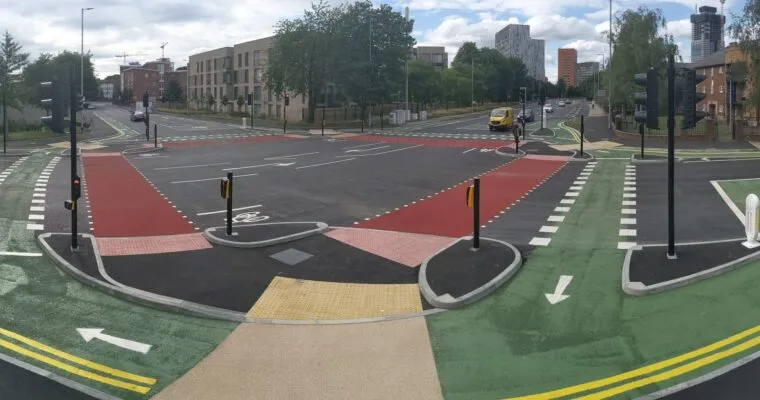
CYCLOPS Junctions (CYCLe Optimised Protected Signals) have been around for a few years now, largely in and around the North West but also in Cambridge. They are a design of junction that includes dedicated walking and cycling crossings around the junction, with the pedestrian areas on the inside of the cycling ones. This introduces a number of benefits which can be explained in the design document on the TfGM Website.
I realised recently that I have a number of documents and images from the early days of the first CYCLOPS just sitting on my server and there may be a justification of historic record and of general interest for this innovation in traffic engineering.
Planning
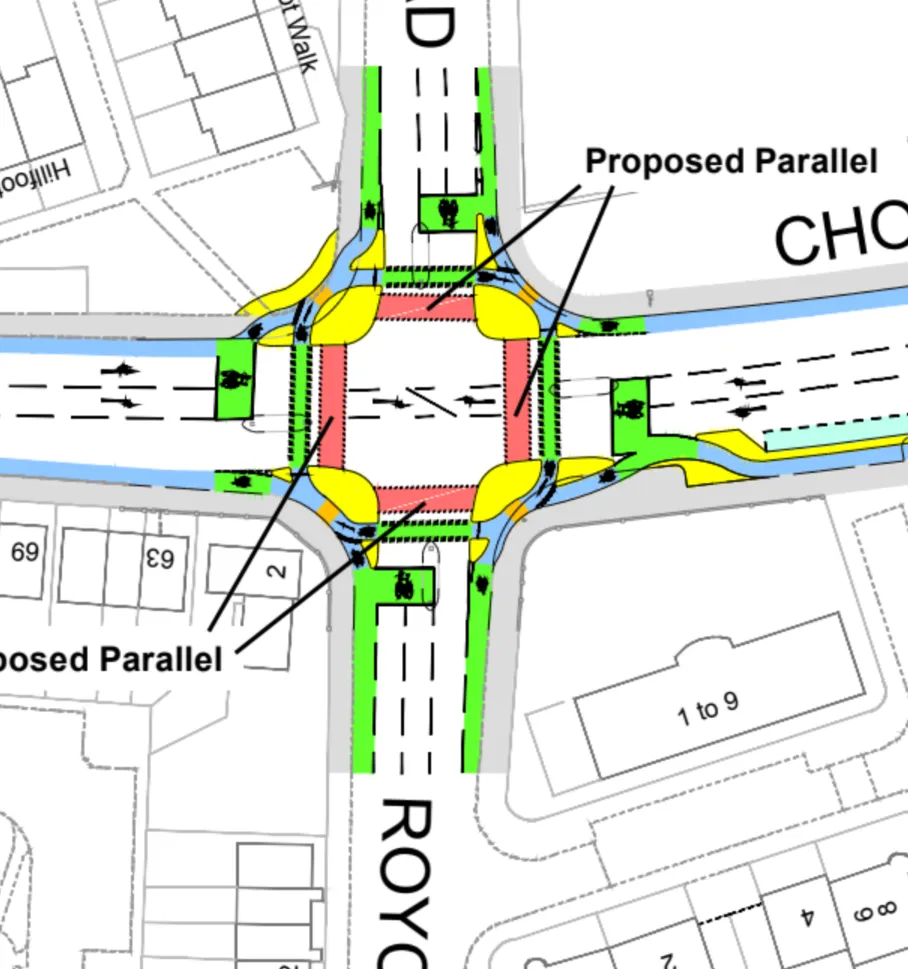
The first CYCLOPS was planned as part of the Chorlton Cycleway, a 4-ish mile route from the suburb of Chorlton to Manchester City Centre. This route had been planned internally since at least 2015 but first went to public consultation in 2018 and this was the first glimpse of a CYCLOPS junction. It had not been marketed as such yet.
At this point, it was not known how cyclists would take to the new infrastructure so Advance Stop Lines were added to all arms to give cyclists a choice to stay on the road, especially for right turns. Subsequent CYCLOPS junctions would not include these.
The consultation for this stretch of road was largely uncontroversial so construction was given the go-ahead relatively soon. In more contentious areas such as the centre of Chorlton where parking and car capacity would be affected, construction would be delayed for multiple rounds more consultation and construction that as of the time of writing has only just finished!
Construction
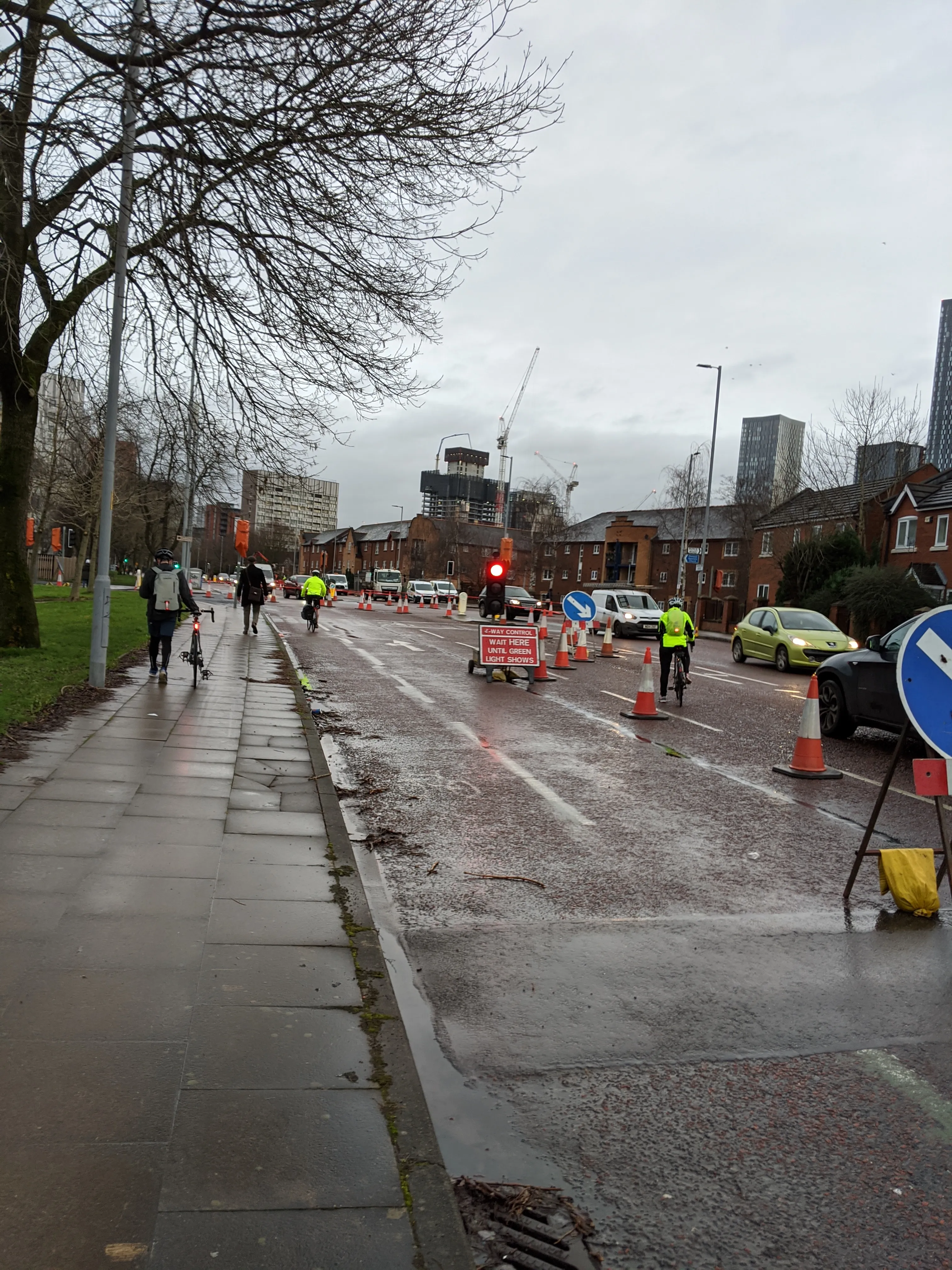
Construction started in late 2019 and took shape with temporary traffic lights to keep the junction open to all traffic, albeit with large queues. Two corners were fenced off at once, allowing teams to build the distinctive kerbed pedestrian islands and cycle tracks on each corner, while allowing all directions of traffic to flow through the middle, on four-way control. Then, the alternate two corners could be fenced off and constructed. This technique would be used on future CYCLOPS construction as well.
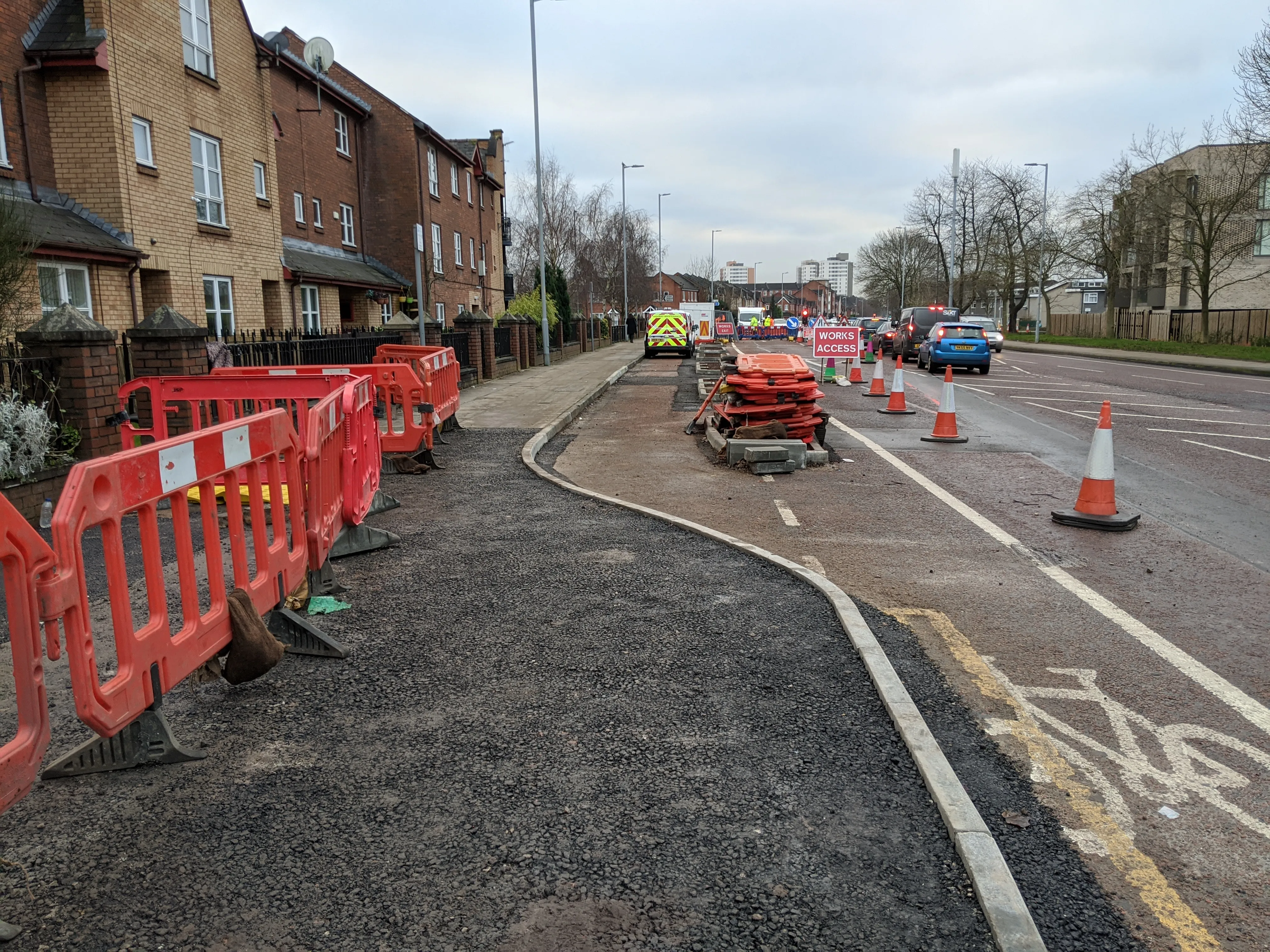
Not long after, the first approach cycle lanes started to take shape and the reconstruction of the footway and addition of rain gardens could be seen.
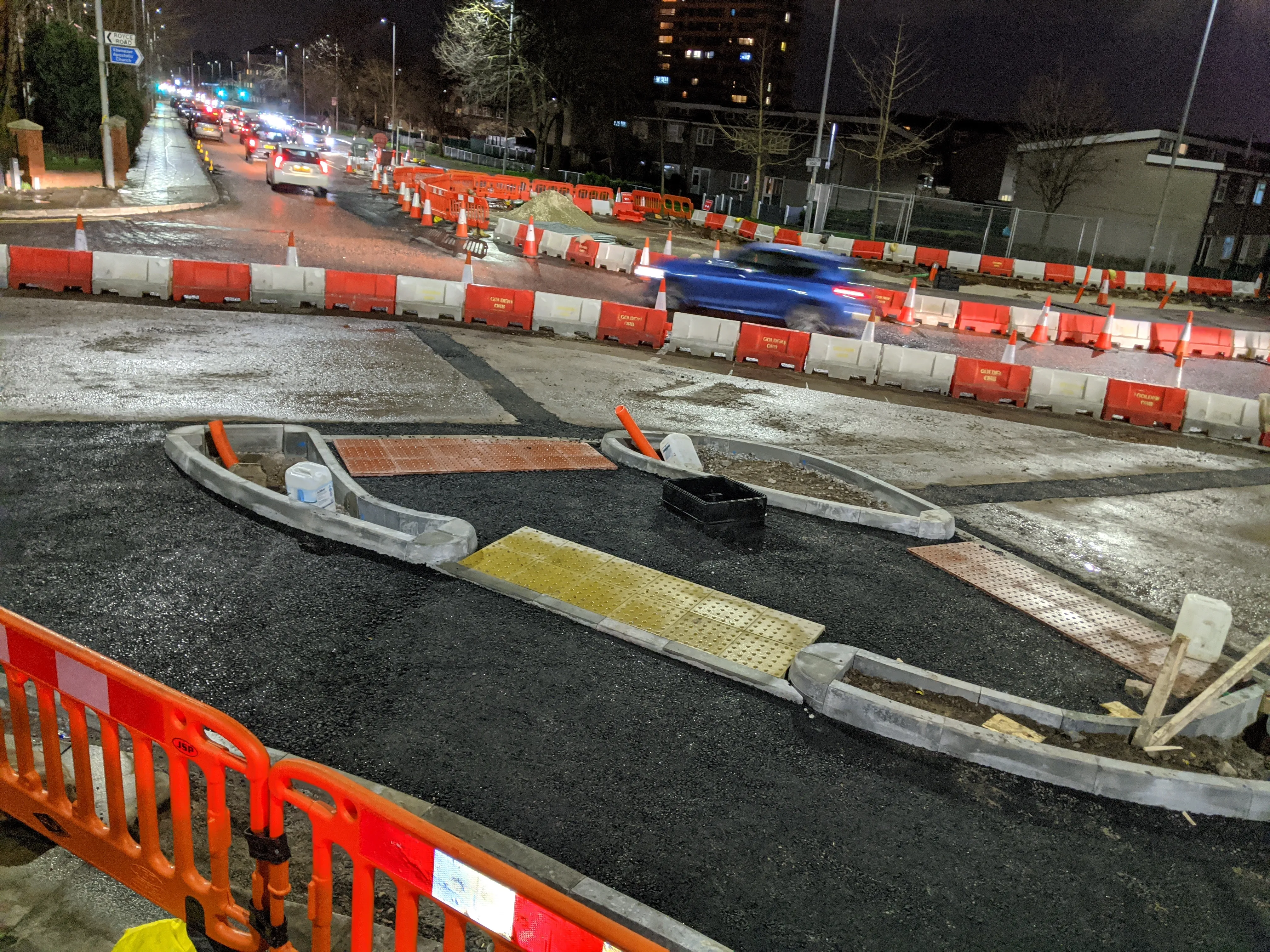
In under a month, the first evidence of the corner islands can be seen, with tactile paving already installed for where pedestrians will cross the cycle track and the roadway. On this initial design, pedestrians did not have priority over the cycle track and as such had buff coloured tactile paving. Future designs would include a zebra crossing over the cycle track and red paving.
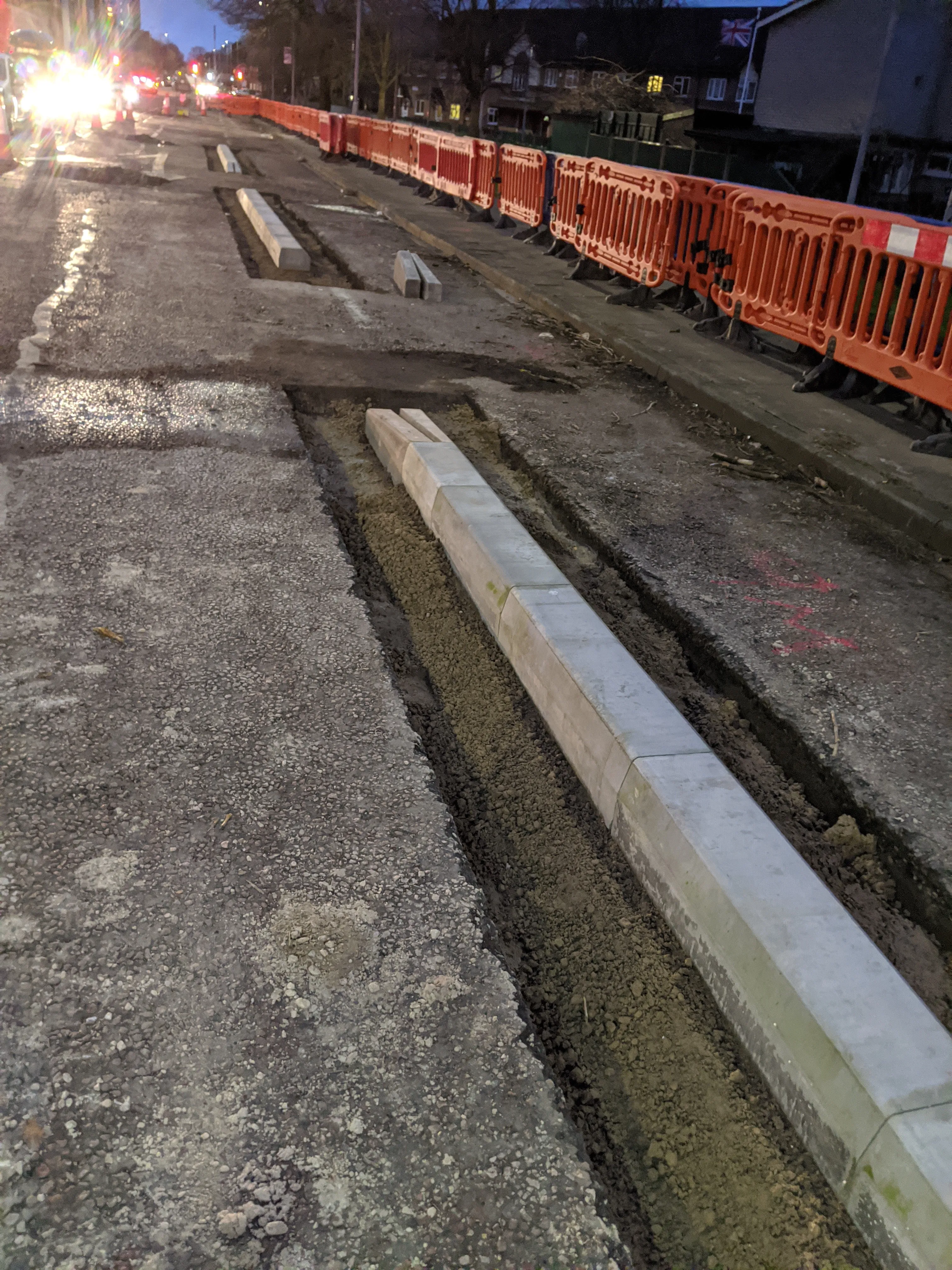
On the other approach, cycle lane kerbs could be seen being inset into the roadway.

This image shows the opposite island being constructed. The scale of the reconstruction of the road can be seen here, including the sub base formed of MOT Type 1 aggregate which compacts to form a stable base which does not heave with frost. Sand is laid on top to allow the tactile paving to have the appropriate fall towards the roadway. Ducts are laid where cabling for the traffic signals will need to be run, and gullies are positioned to take rainwater into the sewage system, or where appropriate, the rain gardens.
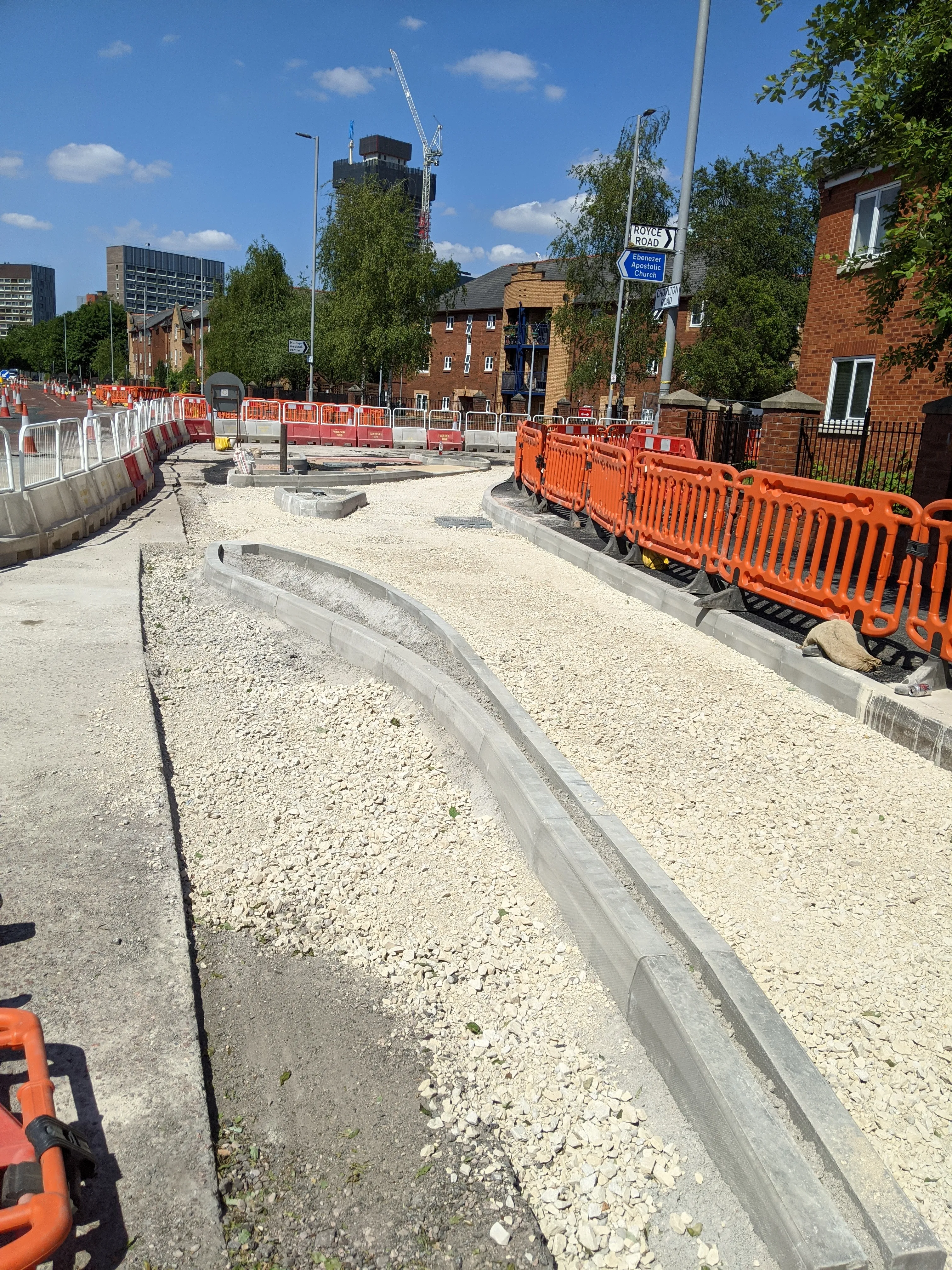
Another photo of the reconstruction.
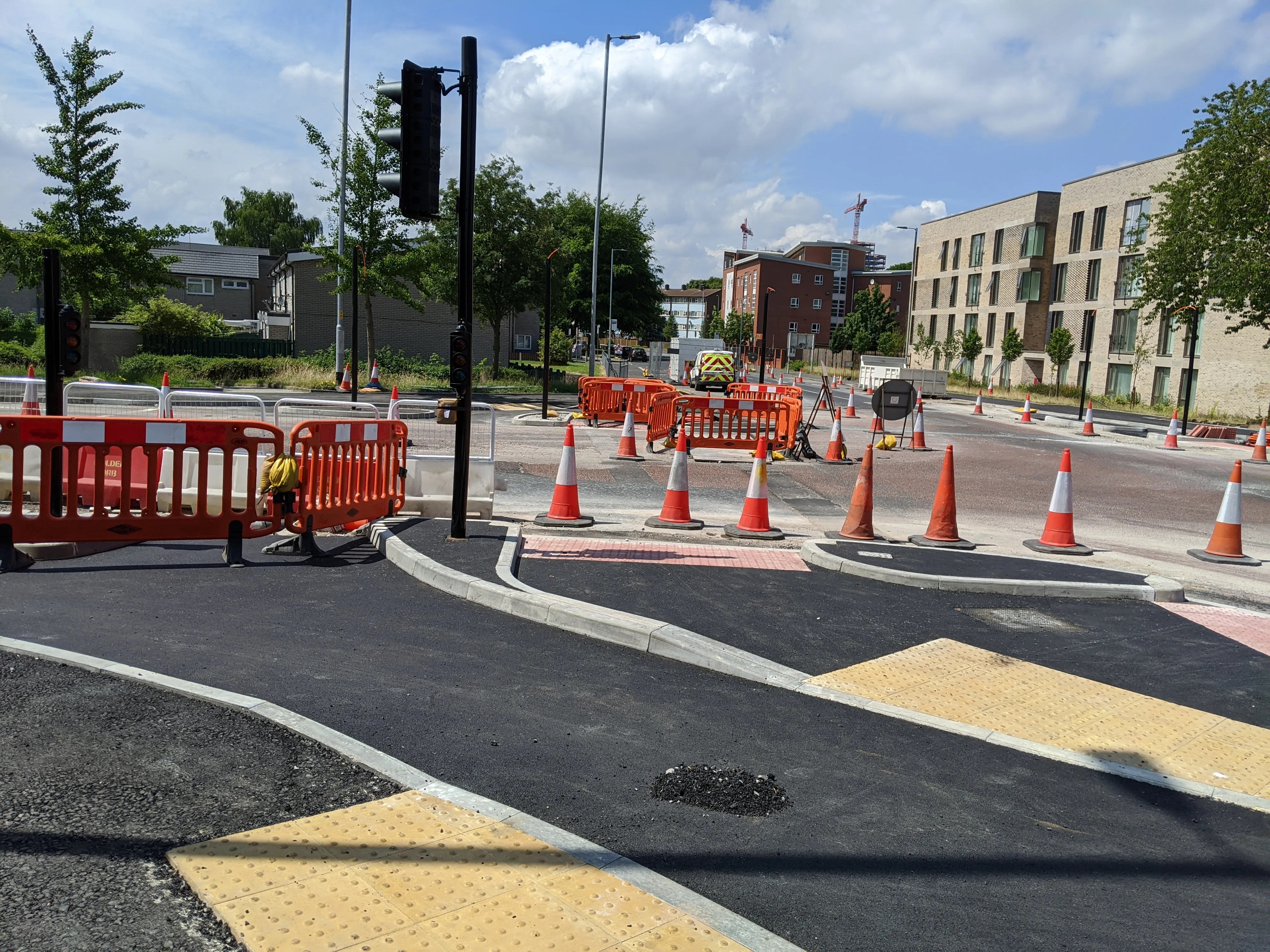
Five months into construction, all the islands have been built and the finished tarmac surfaces for the cycle lanes and footways can start to go in. Note how smooth things are at this stage! Traffic signals have also started to be installed but the junction is still running on four way control temporary signals.
Finishing Touches
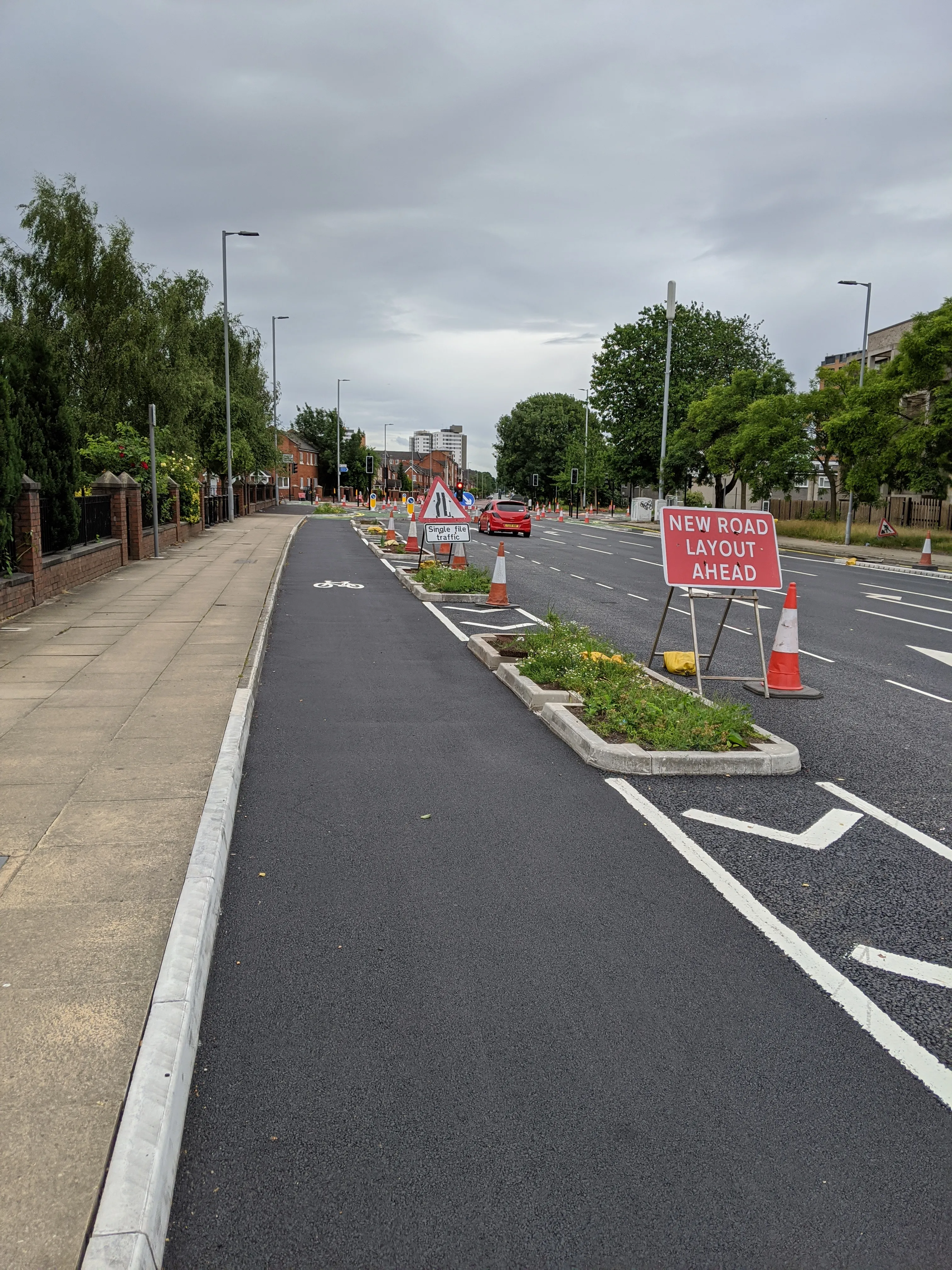
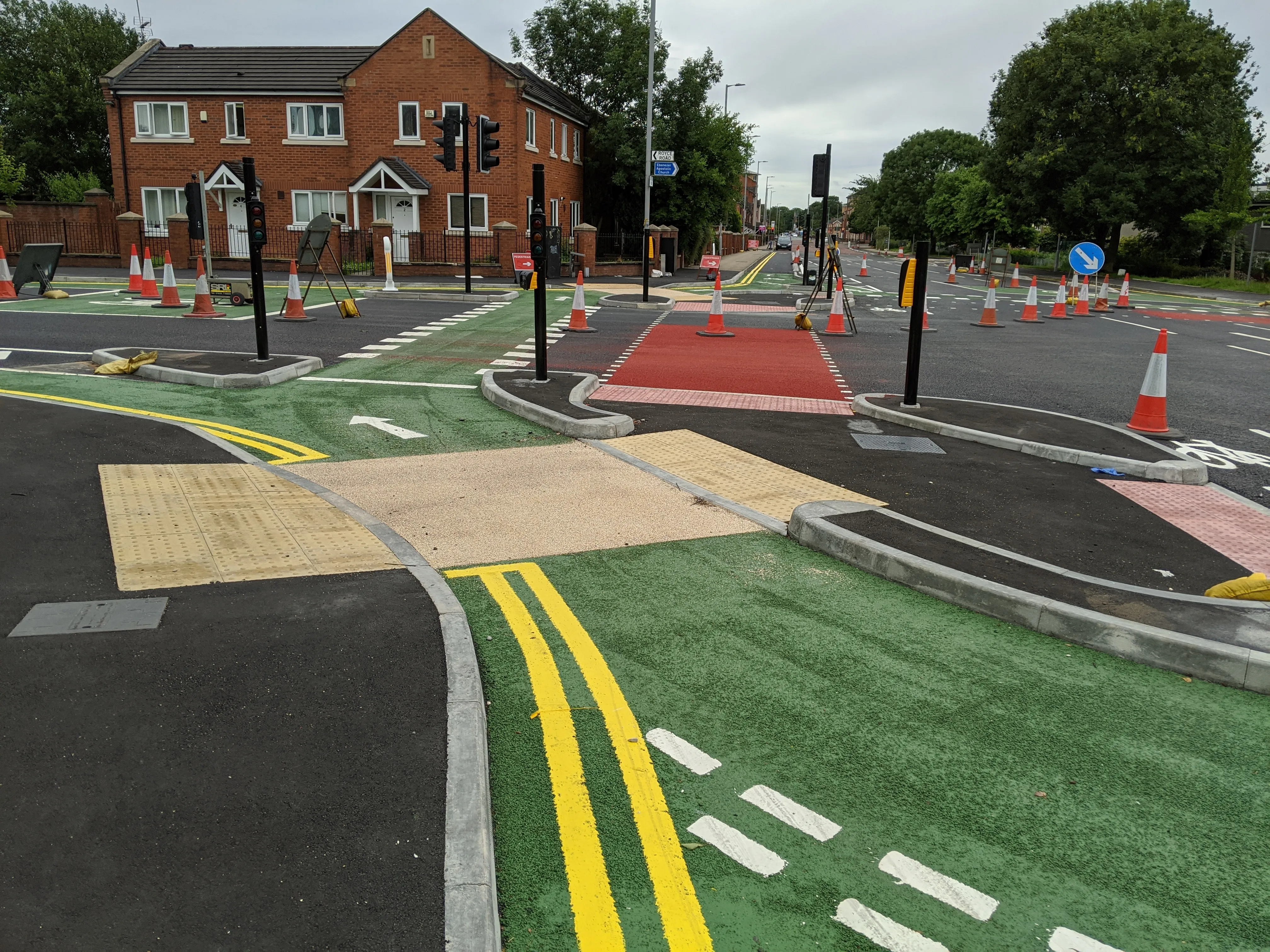
By the end of June (so nearly 6 months on) the junction is starting to have the finishing touches applied. Road markings have been added and the coloured surface dressing is being applied. The team closes each lane separately to allow them to work on different parts of the road markings: you can see this from the half-painted pedestrian crossing. This junction is quite “loud” in its colours and markings but this may well have been to draw attention to the new infrastructure. Unfortunately the surface dressing does add a little roughness to the ride quality along this stretch: future CYCLOPS junctions would use dyed tarmac which leaves a much smoother finish.
Opening
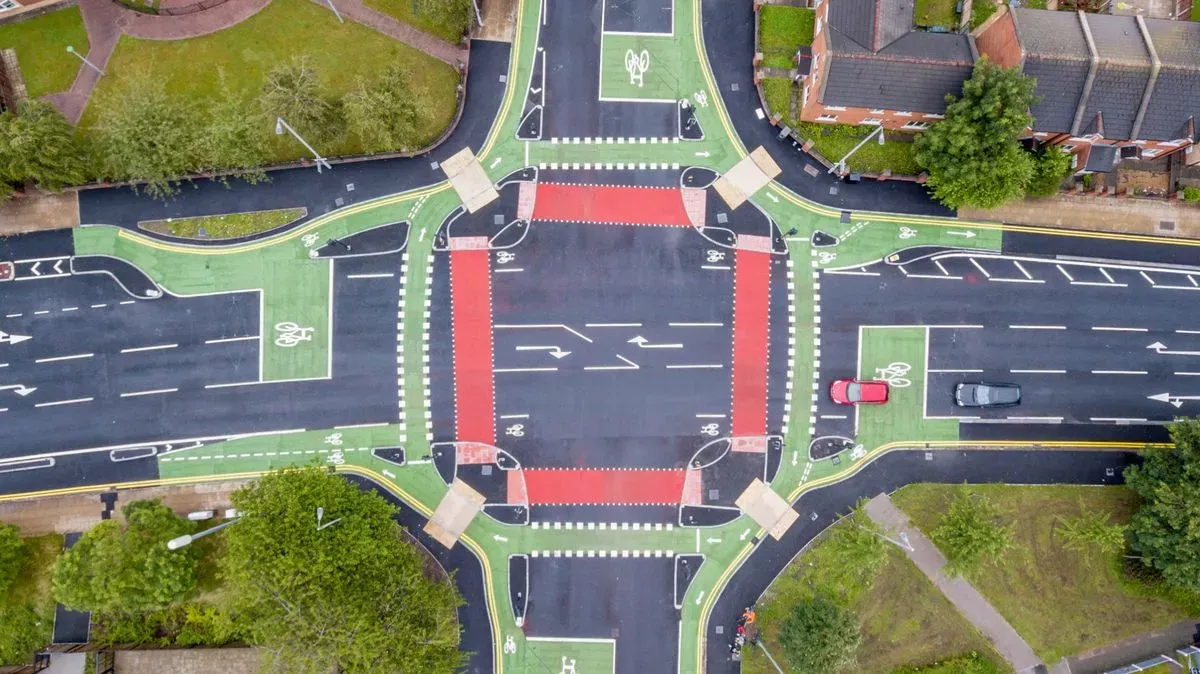
The junction officially opened on 1 July 2020 and the traffic signals were commissioned. There was a press event and the route was publicised on the council website and communications. Some people feared it would be confusing from seeing the overhead image but on the ground it is very easy for everyone to understand. Cyclists stick to the green bits, pedestrians to the red bits, and drivers in the roadway. Everyone has their own traffic signals and as long as they’re obeyed, everyone stays safe and there is no confusion.
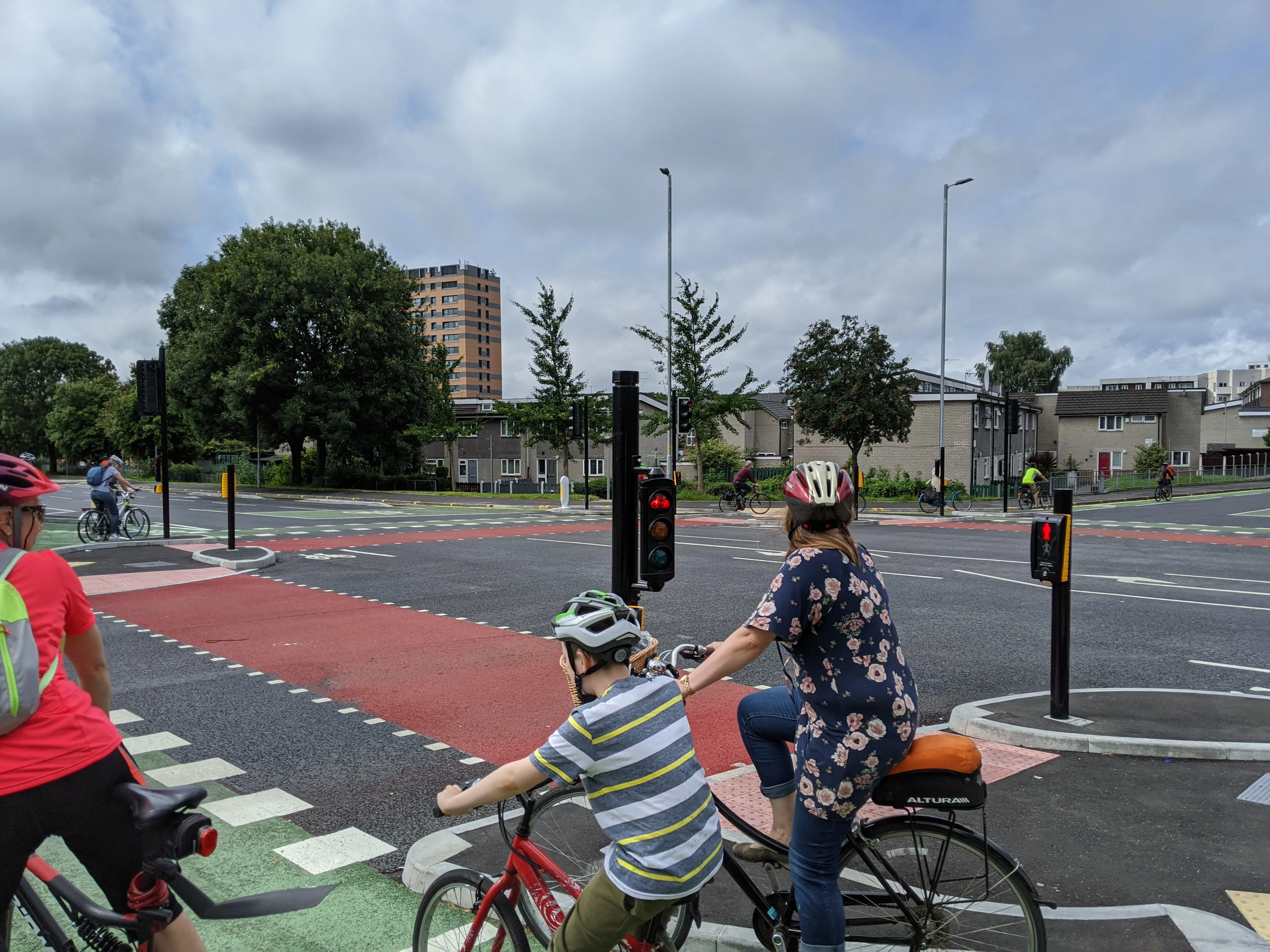
The junction saw high usage from people walking and cycling immediately as it was on a very popular cycle route. While it took everyone a while to get used to the new setup (cyclists using pedestrian crossings and vice versa), it quickly became a great success, and a huge improvement on the old junction that didn’t even have signalised pedestrian crossings let alone any infrastructure for cyclists.
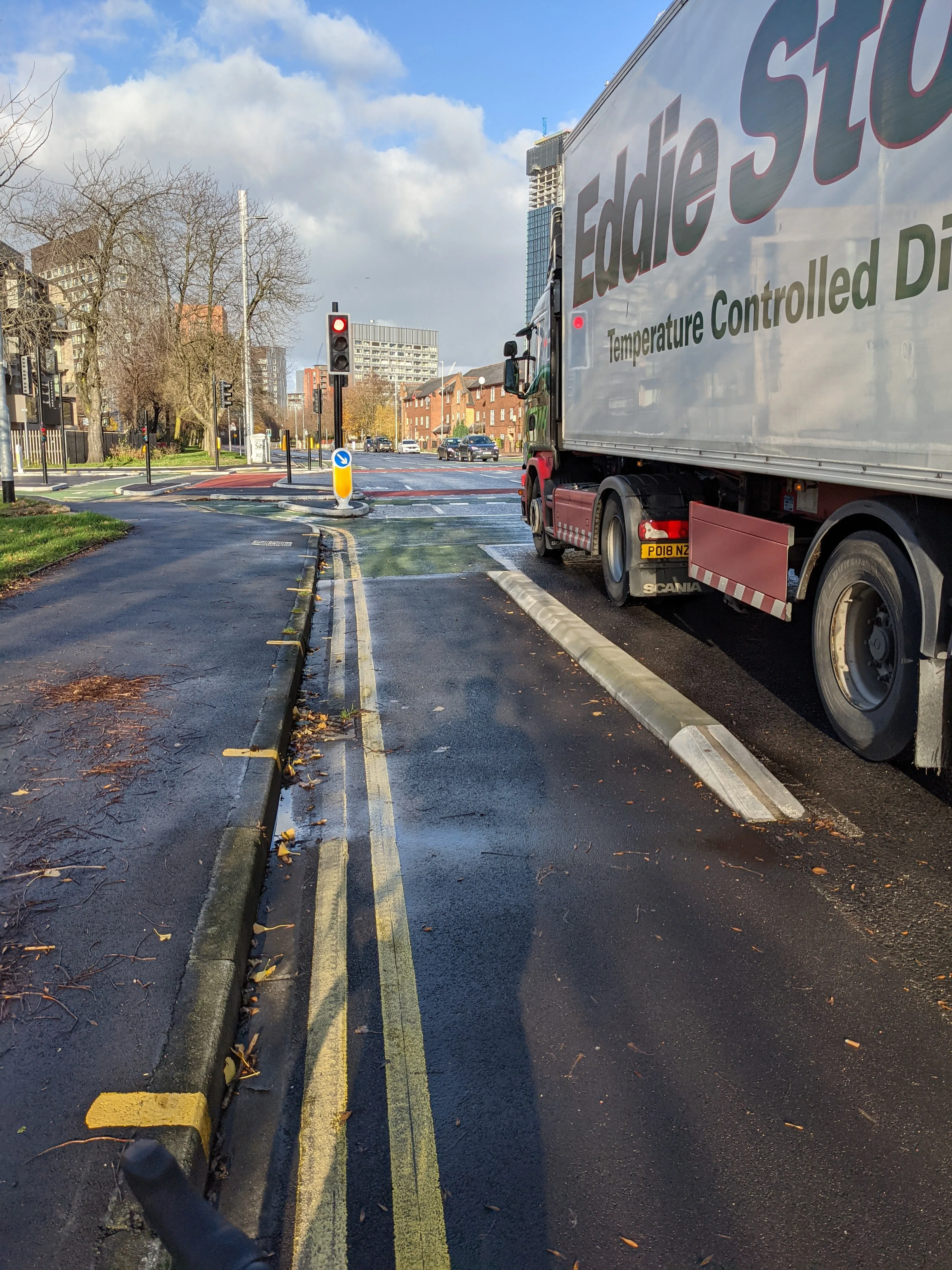
Initially the junction required cyclists to press a button to get a green light but subsequently, detection loops would be added to the tarmac of the approach cycle lanes so cyclists could be automatically detected on their way to the junction and a green light could come around without the button press. Due to the nature of the junction which means all cars have to be stopped before pedestrians and cyclists get a green (and then all directions of peds/cycles get a green simultaneously), it means there are slightly longer delays at this junction than other adjacent ones that have designs that allow instant cycle priority, however delays for all traffic is very low.
